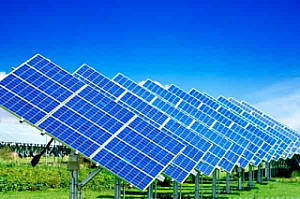Anton Pischagin, a graduate student of the Faculty of Radiophysics advised by Professor Andrey Kokhanenko, is developing nanostructures based on silicon for converting solar energy into electricity. These materials will allow doubling the efficiency of solar cells.
Based on the results of experiments with already-received semiconductor nanostructures, TSU scientists plan to increase the efficiency of solar cells up to 35-40%. The maximum possible efficiency of such batteries, according to theoretical calculations, is 53%.
The similar developments are being carried out in research centers in the USA, Canada, Germany, France, and Japan, but overseas silicon solar cell efficiency does not exceed 25%, and solar cells with quantum dots are only 12%.
- One of the methods to improve the efficiency of solar cells based on silicon is sputtering germanium quantum dots, - says Anton Pischagin. - Using such points will allow collecting the solar energy in the range of visible and infrared radiation (up to 1.6 microns) and thus improve the efficiency of conversion of solar energy into electricity.
According to this scientist, now many researchers are working with structures based on gallium arsenide, but the structure of the silicon solar cells with quantum dots is much simpler, which makes them cheaper to manufacture. In comparison, gallium arsenide solar cells are composed of multiple cascades of multilayer structures, each of which absorbs energy in a separate band, but for the absorption and conversion of the same amount of energy one cascade of multilayer silicon structure is sufficient.
Currently, scientists of the Faculty of Radiophysics are determining the optimum number of atomic layers of the structure, their thickness, the concentration of germanium islands, and other parameters to improve efficiency.
Helioenergetics is currently the most environmentally friendly source of energy. Solar panels can be used in aerospace, in the military and civilian sectors, and in the construction of electrical generating stations for different purposes from the autonomous power supply system of a country house to ensuring the electricity for entire regions.

